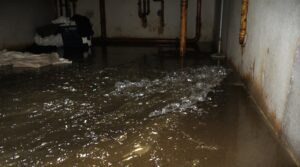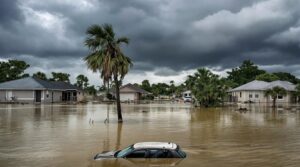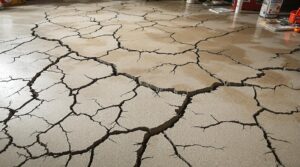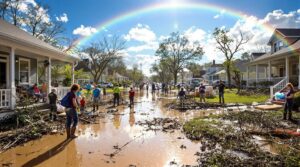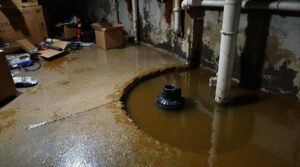Gap insurance typically covers the difference between a vehicle's actual cash value and the outstanding loan or lease balance in the event of a total loss, including losses resulting from flood damage. Gap insurance policies may have specific exclusions and limitations for flood damage coverage, and the coverage amount is determined by the policy terms. To fully understand the specifics of gap insurance coverage for flood damage, it is crucial to examine the intricacies of policy exclusions and limitations.
Key Takeaways
- Gap insurance typically covers flood damage, bridging the financial gap between the vehicle's actual cash value and outstanding loan or lease balance.
- Standard vehicle insurance policies may cover flood damage, but gap insurance provides additional protection for rapid vehicle depreciation.
- Policy exclusions and limitations, such as geographical limitations and pre-existing damage, may impact flood damage coverage under gap insurance.
- Accurate documentation, including photos and flood assessment reports, is critical for claim approval and expediting the review process.
- Gap insurance payout is determined by the actual cash value of the vehicle and the outstanding loan or lease balance, as per policy terms.
Understanding Gap Insurance Coverage
When considering the purchase of gap insurance, it is crucial to understand the specific coverage it provides. Gap insurance is designed to bridge the financial gap between a vehicle's actual cash value and the outstanding balance on the loan or lease in the event of a total loss. This type of insurance is particularly relevant due to vehicle depreciation, which can occur rapidly in the first few years of ownership. Vehicle depreciation can result in a significant difference between the vehicle's market value and the loan or lease balance. Gap insurance provides coverage for this difference, helping to mitigate financial losses. Understanding the specifics of gap insurance coverage can help individuals make informed decisions about their insurance needs and guarantee they have adequate protection.
Flood Damage and Vehicle Insurance
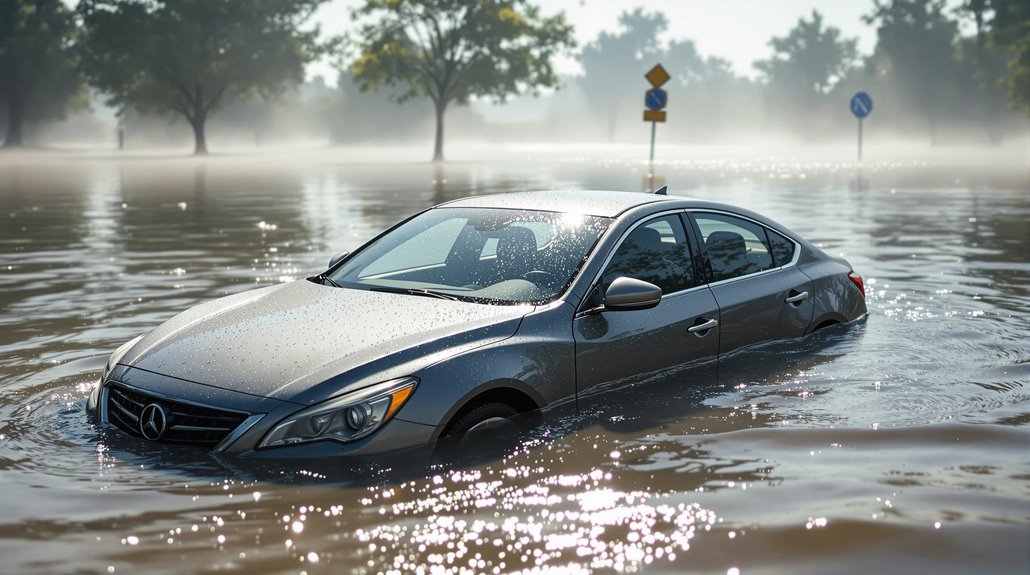
Vehicle owners should know the extent to which flood damage is covered by their existing vehicle insurance policies. Standard vehicle insurance policies may offer coverage for flood damage, but exclusions and limitations often apply, and coverage options can vary depending on location and policy type. It is essential to review policy terms to understand the specific conditions and restrictions that may impact the coverage for flood damage to vehicles.
Flood Damage Coverage Options
Although standard vehicle insurance policies typically cover damage caused by various perils, they rarely provide adequate protection against the devastating effects of flooding. To bridge this gap, specialized insurance options are available that offer extensive coverage for flood-related damage. Some policies provide coverage for flood damage prevention measures, such as waterproof coatings and elevation systems, to protect vehicles from rising water levels. Additionally, vehicle protection plans can provide extended coverage for damage caused by flooding, including damage to engines, electrical systems, and interior components. These specialized policies offer vehicle owners a means of protecting their vehicles from the unexpected and potentially catastrophic effects of flooding, providing a crucial layer of protection for their valuable assets.
Exclusions and Limitations Apply
Standard vehicle insurance policies, as well as specialized flood damage coverage options, often contain specific exclusions and limitations that greatly impact the scope of coverage offered to vehicle owners. These exclusions may include geographical limitations, pre-existing damage, and non-compliance with policy requirements. Additionally, limitations may apply to the amount of coverage available or the timeframe for filing a claim. Vehicle owners must review their policies carefully to understand these exclusions and limitations. Failure to comply with policy requirements may result in premium adjustments or impact policy renewals. It is essential to discuss any questions or concerns with the insurance provider to guarantee the scope of coverage meets individual needs and provides adequate protection against flood damage. Detailed knowledge of policy terms guarantees informed decision-making.
Gap Insurance and Natural Disasters
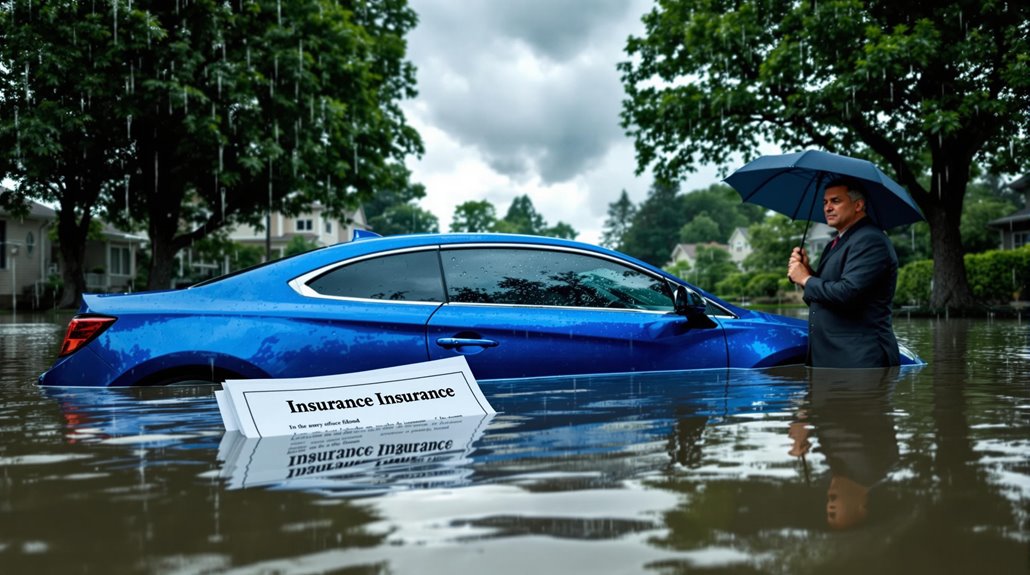
Gap insurance provisions may cover flood damage to vehicles but often have coverage limits, which are typically based on the vehicle's actual cash value. Policy exclusions, however, may negate gap insurance coverage in specific situations, such as if a vehicle is damaged while driven during a flood warning. Certain policy exceptions also may apply in cases where flood damage results from other disasters, such as hurricanes or wildfires.
Flood Damage Coverage Limits
When floodwaters rise, the financial impact can be just as devastating as the physical destruction, and understanding flood damage coverage limits is crucial in mitigating this impact. Gap insurance policies often have specific coverage limits for flood damage, which may vary depending on the policy and the location of the insured property. These limits typically range from a few thousand dollars to hundreds of thousands of dollars, depending on the severity of the flood and the resulting damage. It is essential to review the policy terms and conditions to understand the coverage limits and any applicable deductibles or exclusions. By knowing the coverage limits, policyholders can better prepare for potential flood-related expenses and make informed decisions about their financial obligations.
Policy Exclusions and Exceptions
Although policyholders may have gap insurance to supplement their standard insurance coverage in the event of a natural disaster, such as a flood, certain policy exclusions and exceptions may apply, further complicating an already complex claims process. To navigate these complexities, it is essential to review policy specifics and coverage interpretations. The following exclusions and exceptions may apply:
- Pre-existing conditions: Gap insurance may not cover damage caused by pre-existing conditions, such as prior flood damage or maintenance-related issues.
- Maintenance-related issues: Policyholders may be responsible for maintenance-related issues, such as failure to inspect or maintain flood-control measures.
- Optional coverage: Some gap insurance policies may offer optional coverage for specific types of flood damage, such as sewer backup or groundwater damage.
- Policy limits: Gap insurance policies may have limits on the amount of coverage available for flood damage.
With only 27% of homeowners in designated flood zones carrying flood insurance, understanding gap insurance limitations becomes crucial for comprehensive protection.
Does Gap Insurance Cover Flood Damage to Vehicles?
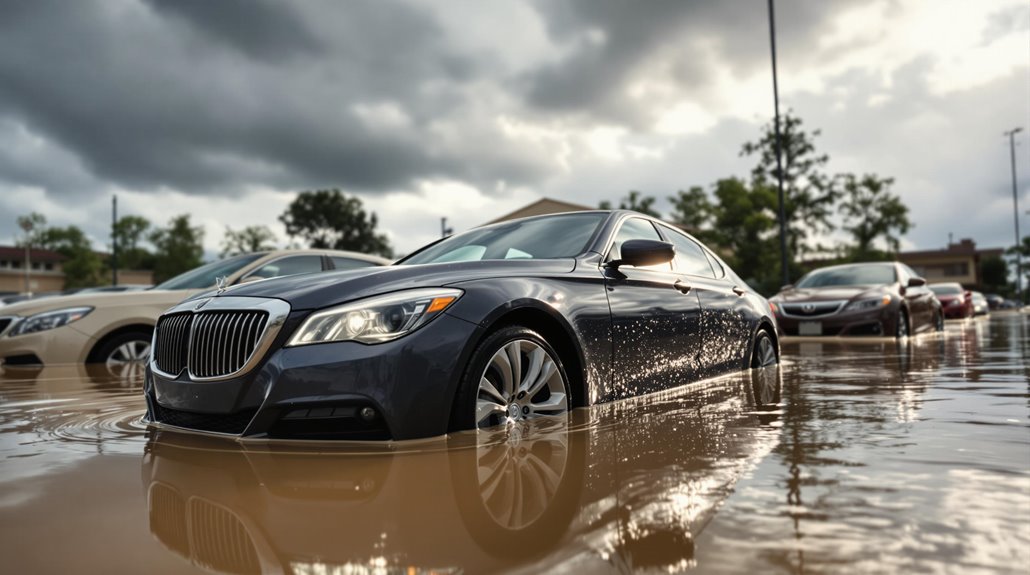
Typically, one of the most pressing concerns for vehicle owners who have experienced flood damage is whether their gap insurance policy will cover the costs incurred. Gap insurance is designed to cover the difference between the actual cash value of a vehicle and the outstanding balance on a loan or lease in the event of a total loss. Vehicle depreciation can notably impact this difference. If a vehicle is damaged by flooding and deemed a total loss, gap insurance may cover the difference between the vehicle's actual cash value and the loan or lease balance. However, gap insurance policies typically require extensive insurance coverage to be in place. Vehicle owners should review their policies to determine if flood damage is covered under their gap insurance.
Flood Damage Coverage Under Comprehensive Insurance
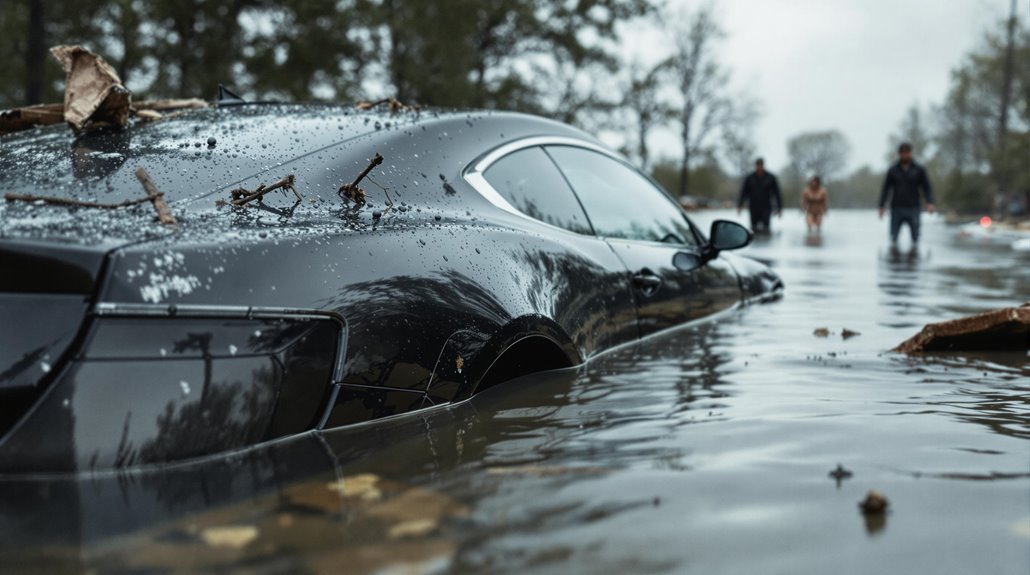
As extensive insurance is often a prerequisite for gap insurance, vehicle owners should understand the extent of flood damage coverage provided under their broad policy. Comprehensive insurance typically offers protection against damage caused by flooding. Vehicle owners with comprehensive insurance may be eligible for compensation for flood-related damages.
When filing insurance claims for flood damage under comprehensive insurance, vehicle owners should:
- Review the policy: Understand the coverage limits and exclusions.
- Document the damage: Take photos and videos to support the claim.
- Request a flood assessment: Get an inspection from the insurance adjuster.
- Submit the claim: File the insurance claims paperwork within the specified timeframe.
Filing a Gap Insurance Claim for Flood Damage
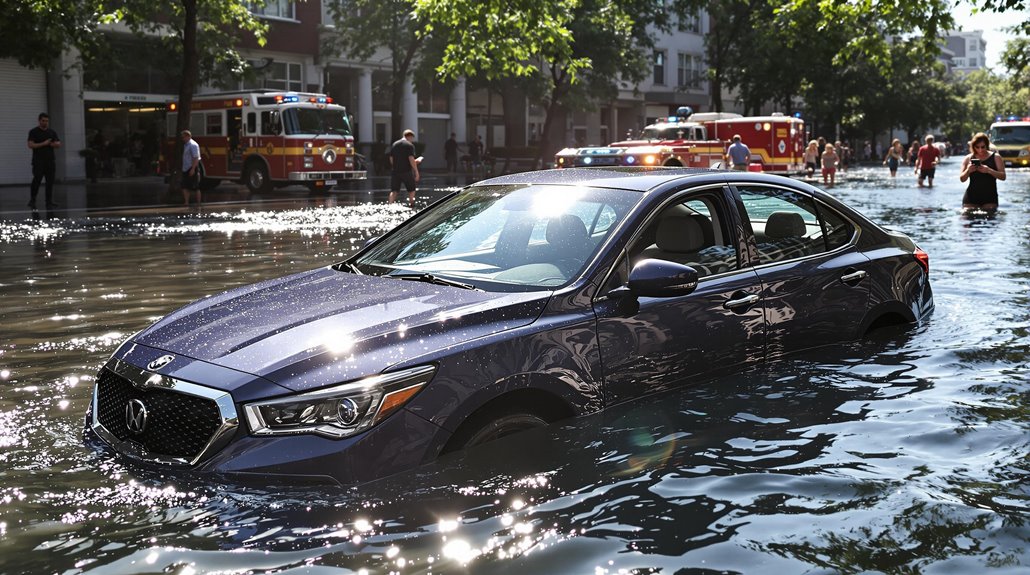
When complete insurance coverage is insufficient to cover the full extent of flood damage to a vehicle, gap insurance may provide additional financial protection. In such cases, the policyholder may initiate the claim process for gap insurance to cover the outstanding balance. The claim process typically involves providing documentation of the flood damage, including a detailed flood assessment report. This report will outline the extent of the damage and the necessary repairs or replacement costs. The gap insurance provider will review the documentation to determine the amount of coverage available under the policy. If approved, the gap insurance will cover the difference between the actual cash value of the vehicle and the outstanding loan or lease balance.

